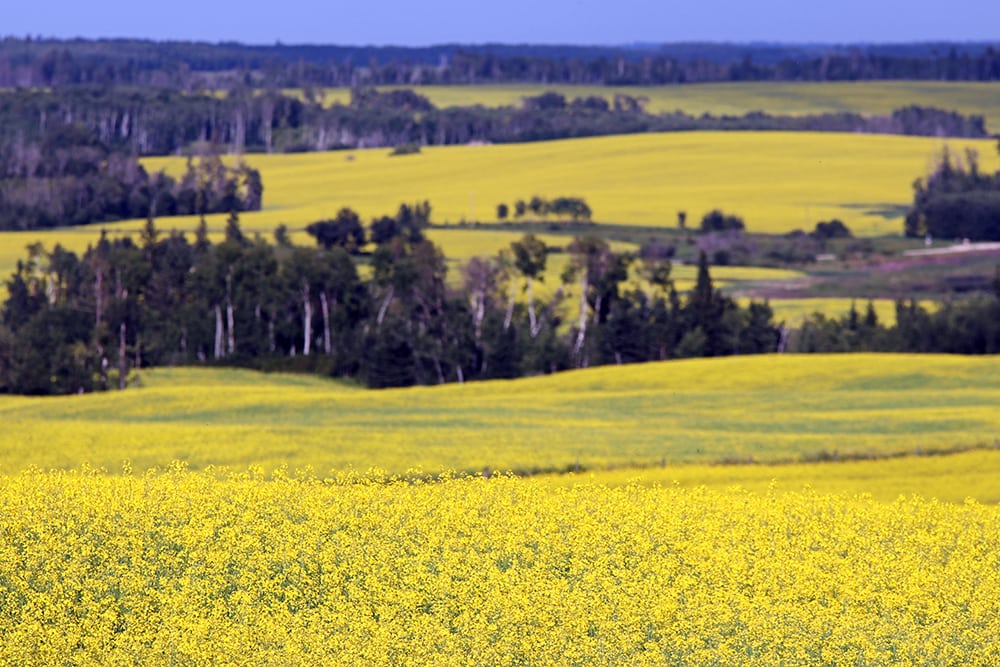Canola could see record production this harvest, said Neil Townsend of FarmLink.
The Grain World crop tour, sponsored by FarmLink Marketing Solutions, completed its annual drive through the prairie provinces July 24-26.
Market analysts reviewed the information and released their projections in Saskatoon July 26.
“We took canola up almost four bushels an acre (38.2 pre-tour to 41.9 post-tour). The sum total of all the different vehicles and all the different routes that we went, we just saw continually the kind of canola that exceeded our pre-tour estimates and we’ve adjusted accordingly,” he said.
Read Also

Using artificial intelligence in agriculture starts with the right data
Good data is critical as the agriculture sector increasingly adopts new AI technology to drive efficiency, sustainability and trust across all levels of the value chain.
However, the market analyst said the larger inventories that were discovered during the tour, when added to increased harvest volumes, will create heavier ending stocks for canola.
“We’re not quite as bullish (on canola as we were) and I think the key thing is it’s just reverted canola back from a production story to a demand story and the key variable is going to be just how much will the Chinese take in light of all the trade tensions and all that kind of stuff,” said Townsend.
“We’re pretty sure it’s going to be a record amount. We’re just not sure if it’s going to be four and a half million or five and a half million and it’s that million-tonne-kind of unknown that really is going to drive prices for canola in 2018-19.”
The three day public tour explored random fields in several geographic areas:
- Regina – Swift Current – Kindersley – Saskatoon
- central Saskatchewan
- Winnipeg – Weyburn – Saskatoon
- north of Highway No. 1
- Lethbridge – Red Deer – Saskatoon
- northeastern Saskatchewan
- northwestern Manitoba
Townsend said south of the Trans-Canada Highway most canola is done flowering and pods are setting, but farther north there’s still more flowering with great potential.
“There was more canola fields even than we maybe thought, but a lot of canola and generally speaking it looked pretty good,” he said.
“There are a lot of pods on the plants and if the pods equal potential, there’s a lot of potential there.”
The analysts have raised production potential on all crops, particularly the big four, which besides canola include wheat, durum and peas. Oats and barley were also significantly up from previous expectations.
Yield estimates for wheat increased from 50.5 to 54.4 bu. per ac. or an extra million and half tonnes from pre-tour estimates.
Durum is estimated to average 37 to 39 bu. per acre and peas increased to 40 bu. per acre from about 36.
“Generally speaking, we saw crops five to 10 percent bigger than what we thought they would be. And I think that’s just because the weather hasn’t been too too hot and we’ve seen a little bit of timely rain,” he said.
“I think the story this year is that every millimetre of rain helps.”
Mixed conditions and variability remain a big factor for all crops this year, but insect and disease issues are generally minimal, which surprised Townsend.
“The fact of the matter is that we just didn’t see bugs or disease on most of the crops,” he said.
He added a lot can still happen in the five to six weeks of weather remaining before harvest. While timely rains have occurred and the quality of crops is good, there are no moisture reserves.
“Generally speaking, when you get a dry trend or a drier than average trend, those trends tend to continue until there’s a seasonal break,” he said.
“If we want to just assume that the near future is the same as the recent past, we’re going to see some more kind of timely rains that are going get this crop over the finishing line. If it doesn’t rain, then we could see the yields that we’re expecting go down five to 10 percent,” he said.
















